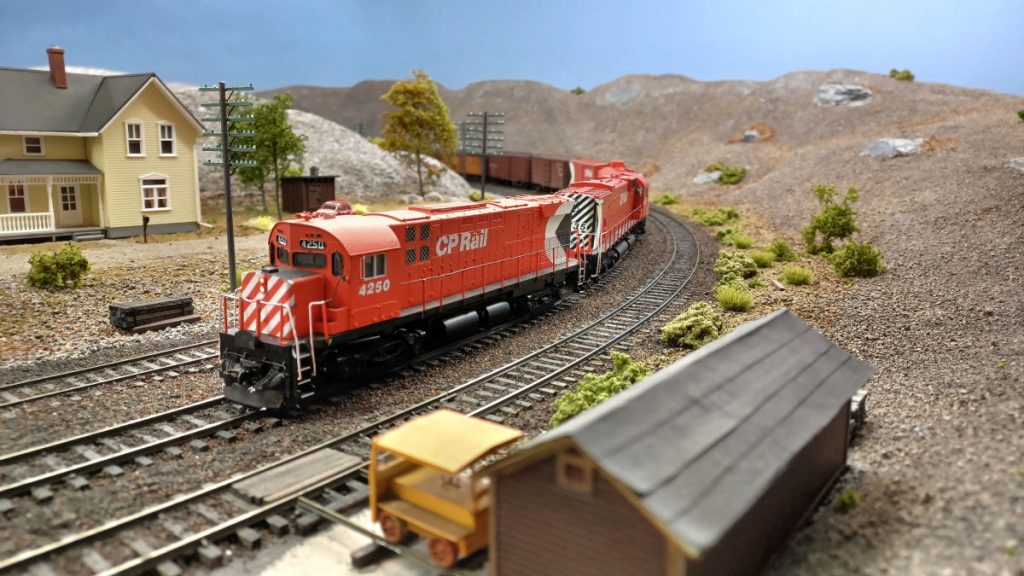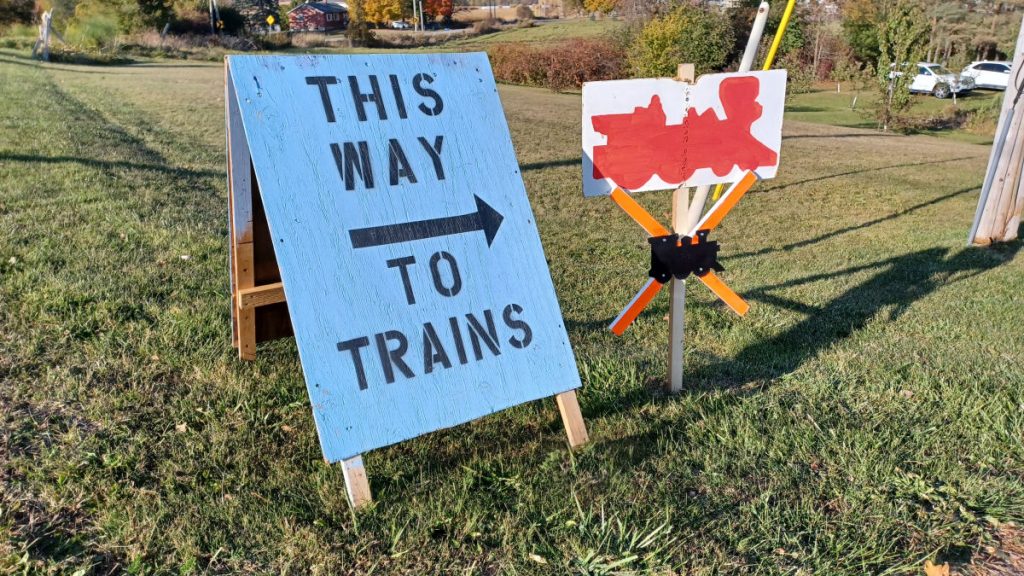201. For movements requiring their use, train orders will be issued by authority and over the signature of the superintendent or designated train dispatchers and only contain information or instructions essential to such movements.
They must be brief and clear; in the prescribed forms when applicable; and without alteration, erasure, or interlineation.
Words or figures in train orders must not be surrounded by brackets, circles, or other marks.
The different forms of train orders may be combined in one, provided that every movement in such combination directly affects the train first named in the order.
202. Each train order must be given in the same words to all employees or trains addressed.
203. Train orders, except those relating to track or other conditions, must be numbered consecutively each day, starting at midnight.
Train orders relating to track or other conditions must be numbered consecutively, using a separate series of numbers, and re-issued if continuing in effect for a period of two weeks.
204. Train orders must be addressed to those who will execute or observe them, naming the place at which each is to receive his copy. Those for a train must be regarded as addressed to conductors, enginemen, and also to pilots or snow plow foremen, if any. Those addressed to yardmasters may used only by crews within yard limits. A copy for each employee addressed must be provided by the operator.
Train orders addressed to operators restricting the movement of trains must be respected by conductors and enginemen the same as if addressed to them.
205. Each train order must be written in full in a book provided for the purpose in the office of the train dispatcher; and with it recorded the signals and responses transmitted, the offices from which the order is repeated and the time, the names of those who sign for the order, the times at which the order is made complete, and the train dispatcher’s initials. These records must be made at once and never from memory or memoranda.
Additions to train orders must not be made after they have been repeated.
206. In train orders, regular trains will be designated by numbers as “No. 10 Eng. 756”, sections as “Second 10 Eng. 756” and those handling a snow plow as “No. 86 Eng. 756 snow plow”. If the number of the engine cannot be ascertained the word “unknown” will be used.
Extra trains, except work extras, will be designated by engine numbers and the direction, as “Extra 234 East”, “Psgr. Extra 234 East”, “Mixed Extra 234 East”, “Plow Extra 234 East”, etc.
Work extras will be designated as “Work Extra 234”.
Engines of other railways will be designated by their initials and numbers, as “Eng. ABC 234”, “Extra ABC 234 East”, or “No. 76 Eng. ABC 234”.
When two or more engines are coupled, or when a combination of units are operated in multiple service, the number of the leading engine or unit will be used in train orders, except when an engine or unit is placed on the head end of a train to operate over a portion of a subdivision only, the number of the engine operating through may be used.
To express even hours in train orders the word “oclock” will be used as “nine oclock 900 am (or pm)” and the words “noon” or “night” will be used instead of “am” or “pm” where midday or midnight is involved as “twelve oclock 1200 noon (or night)”.
In transmitting and repeating train orders by telephone, train order numbers, and the numbers of trains and engines in the address, will be pronounced and then spelled letter by letter. All stations and numerals in the body of an order must be first plainly pronounced and then spelled letter by letter, this: Aurora A-u-r-o-r-a, and one nought five o-n-e n-o-u-g-h-t f-i-v-e.
When train orders are transmitted by telephone, train dispatcher must write the order as he transmits it, and check and underscore each word and figure each time it is repeated. When transmitted by telegraph he must write it as it is being repeated the first time and check and underscore each word and figure each time it is repeated thereafter.
207. Before transmitting a train order, the train dispatcher must give the signal 19R or 19Y followed by the direction to each office addressed, the number of copies being stated, if more or less than three, as: “19R east copy 2”, or “19Y west copy 7”, and receive the proper response from the operator as prescribed by Rule 221.
208. A train order to be sent to two or more offices must be transmitted simultaneously to as many of them as practicable. When not sent simultaneously to all, the order must be sent first to the trains being restricted.
OUTSIDE ABS TERRITORY: The operator at the first restricting point (except initial stations) and at all meeting points must, when practicable, be made a party to the order on 19R, and must deliver copies to all trains affected until all have arrived from one direction.
In transmitting a train order of a previous date, the operator must be advised of the date of issue and when such order is repeated, operator will record the date repeated following the repeated order.
208A. OUTSIDE ABS TERRITORY: A train order must not be sent for delivery to a train at the point at which its right or schedule is being restricted by the order if the train order signal is located beyond the point where such train would be required to stop to permit an opposing train to clear, and at other points, except the initial station, such order should not be sent if it can be avoided. When a train order is so sent to a train, except at its initial station, the operator must be made a party to the order and the words “This order to ____ at ____” must be added, which is notice to an opposing train to approach that point at restricted speed. When Form A train order is used, provision must be made for the restricted train to hold the main track under conditions where such train would otherwise be required to take the siding.
209. Operators receiving train orders must write or typewrite them in manifold on the prescribed form during transmission. They must retain a copy of each train order. The word “complete”, the time, and the signature of the operator must be in his handwriting.
If for any reason a train order is to be rewritten, the operator must make additional copies from one previously repeated, and repeat to the train dispatcher from the new copy each time additional copies are made. The date of issue, repeated time, “complete”, and time must not be changed and the name of the operator who first copied the order will be shown with the initials of the operator who made the additional copies.
The train dispatcher must make record in train order book of each repetition.
When an error is made in transmitting a train order and before it has been repeated, all copies of that order must be immediately destroyed, the order marked “void” in the train order book, and if re-issued, given another number.
210. When a train order is transmitted, each operator receiving the order must, unless otherwise directed, repeat it at once from the manifold copy in the succession in which the several offices may have been addressed. Each operator receiving the order must, unless relieved of the duty by the train dispatcher, check the other repeats for correctness. If an operator is so relieved, the train dispatcher must make record in the train order book. An operator must not be relieved of this duty unless one or more operators who have received the order are required to check each repeat.
When an order cannot be simultaneously transmitted to all, or if the repeat from any office is delayed, or is again required, train dispatcher must, when practicable, require an operator from an office from which repeat has already been made to check the correctness of each subsequent repeat. The office checking such repeats must be recorded in the train order book.
210A. In issuing train order, 19Y may be used to restrict right or schedule of trains, except 19R must be used:
When a train carrying passengers is affected outside ABS territory unless the operator has been made party to the order as prescribed by Rule 208;
When an order is sent for delivery to a train at the point at which its right or schedule is being restricted;
When signatures are required as prescribed by Rules 217, 218 and 219.
210B.
210C.
211.
211A.
213.
214.
215.
216.
217.
218.
219.
219A.
220.
221.
222.
223.


